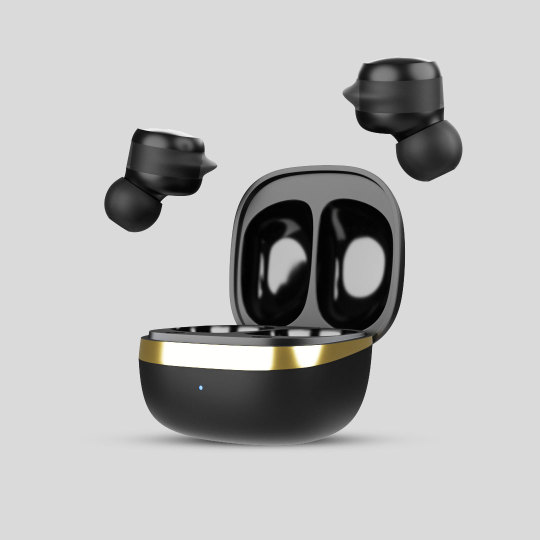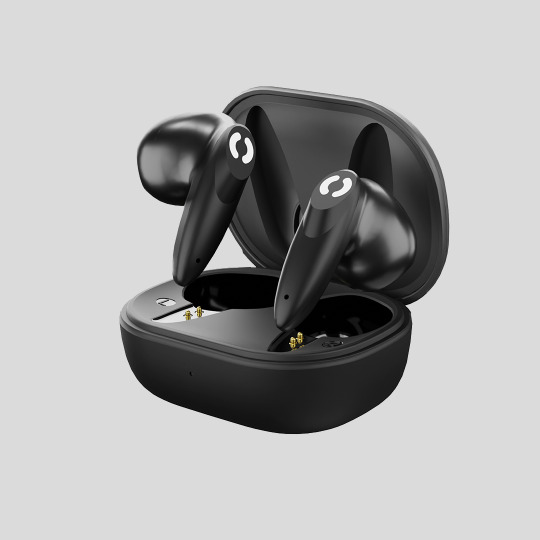Don't wanna be here? Send us removal request.
Text
Indian Startups and Their Incredible Success: A Beacon of Innovation
In recent years, the Indian startup ecosystem has witnessed a remarkable surge, gaining global recognition for its exceptional growth and innovation. This article explores the factors contributing to the success of Indian startups and highlights a few notable examples that have made their mark in various industries.
India's startup ecosystem has experienced a rapid transformation, fueled by a combination of factors. The country's large consumer market, a thriving tech talent pool, and supportive government initiatives like "Startup India" have played pivotal roles. Additionally, increased smartphone penetration and internet connectivity have opened up vast opportunities for startups to reach a wider audience.
Indian startups have consistently demonstrated their ability to innovate across diverse sectors, offering solutions to pressing challenges. In fintech, companies like Paytm and PhonePe have revolutionized digital payments, making financial transactions seamless and accessible to millions. Healthtech startups such as Practo and Portea Medical have improved access to healthcare services, while edtech platforms like Byju's have transformed the way students learn. These examples reflect a vibrant startup landscape that is committed to finding unique solutions and disrupting traditional industries.
Indian startups have achieved remarkable success in scaling their operations and attracting significant investments. Several startups have become unicorns, with valuations exceeding $1 billion. Flipkart, the e-commerce giant, was acquired by Walmart in 2018 for a whopping $16 billion, making it one of the largest acquisitions in the Indian startup space. Companies like Ola, Zomato, and Swiggy have revolutionized the transportation and food delivery sectors, capturing substantial market share and garnering global recognition.
Indian startups have not only made an impact within the country but have also gained prominence globally. The success stories of companies like OYO Rooms and Freshworks have put India on the global startup map. These startups have expanded their operations internationally, catering to diverse markets and attracting foreign investments. Furthermore, Indian entrepreneurs have gained recognition for their leadership skills and innovative ideas, securing positions in prestigious international rankings and forums.
While the Indian startup ecosystem has flourished, it still faces challenges. Access to capital, regulatory hurdles, and infrastructure limitations remain areas that need attention. However, the government's continuous efforts to ease regulations and provide support to startups are encouraging signs.
Conclusion:
Indian startups have carved a niche for themselves by combining innovation, market potential, and a relentless entrepreneurial spirit. The ecosystem's success has not only propelled economic growth but has also positioned India as a hub for technological advancements and disruptive solutions. As the journey continues, Indian startups are poised to make an even greater impact on a global scale.
0 notes
Text
Hoppup Airdoze Q50
Experience the epitome of wireless audio perfection with AirDoze Q50 Earbuds. Immerse yourself in superior sound quality, enjoy uninterrupted 50-hour playtime, seamless Bluetooth 5.3 connectivity, and unleash your true gaming potential with the exhilarating Rage Mode. Elevate your wireless audio experience to new heights.
#wireless bluetooth headphones#true wireless#bluetooth earphone#tws earbuds#tws#wireless earphones#bluetooth headphone#hoppup#bluetooth headset#bluetooth
0 notes
Text
Hoppup Alpha
HOPPUP Alpha The "Made in India" designation with up to 50 hrs of playtime , Bluetooth 5.2 technology, and environmental noise cancellation suggests that this neckband is designed for audio and music enjoyment, while the "Gaming Mode" suggests that it may have additional features optimized for gaming.

0 notes
Text
HOPPUP Snap has Version 5.1 Extremely Low Latency of Bluetooth Playtime of up to 10 hours on a single charge with Type C quick charging Overall Playtime of Up to 30 Hours, 10 Mins 60 Minutes of Charge Environmental Noise Cancellation, 10 MM Playtime.
#bluetooth earphone#hoppup#bluetooth#tws#wireless earphones#tws earbuds#bluetooth headset#wireless bluetooth headphones#bluetooth headphone#true wireless
0 notes
Text
Hoppup AirDoze H25
HOPPUP AIRDOZE H25, COMPACT AND LIGHTWEIGHT 40MS LOW LATENCY BLUETOOTH 5,3 13MM DYNAMIC DRIVERS WITH HOPPUP SIGNATURE SOUND BLUETOOTH RANGE - 15M A SINGLE CHARGE LASTS UP TO 8 HOURS OF PLAYTIME; A CASE LASTS 17 HOURS (30/250MAH). Voice Assistant Touch Controls ,FAST CHARGING SUPPORT - 10 MINS CHARGE AND UP TO 60 MINS PLAYTIME
0 notes
Text
HOPPUP AirDoze D50 features Bluetooth 5.3 connectivity, offering up to 50 hours of playtime with the charging case. Also, environmental noise cancellation, and gaming mode with 40 ms latency. Made in India, which means they are supported by a local warranty and customer service.
#wireless bluetooth headphones#true wireless#bluetooth headset#hoppup#tws#tws earbuds#bluetooth headphone#bluetooth earphone#bluetooth#wireless earphones
0 notes
Text

HOPPUP AirDOze S50 offers up to 50 hours of playtime with the case and range of 15 meters. They feature Active Engage 5.3 technology and a Rage mode with low latency. Dedicated audio modes for Bass Bomberz and Balanced with HOPPUP signature sound. The earbuds can charge rapidly, providing 60 minutes of playtime with a 10-minute charge.
1 note
·
View note
Text
Hoppup Gand True Wireless Earbuds
.HOPPUP Grand ,Version 5.0 of Bluetooth, 3 hours to fully charge the 1200 mAh built-in power bank 75-hour play session with a case Resistant to Sweat and Water.
0 notes
Text
Hoppup AirDoze M30
The HOPPUP AirDoze M30 has a game mode for Bluetooth 5.3 (up to 50 ms Latency), playtime of up to 30 hours with charging case, two microphones with environmental noise suppression, and Type-C fast charging

0 notes
Text
HOPPUP AirDoze H30 has Bluetooth Version 5.3 and a 15-meter range in raging mode. (Upto 40 ms latency) With the charging case, you may play for up to 30 hours. Type-C quick charging, a 13mm dynamic driver, and a pair of MEMS microphones create the distinctive Bass Bomberz Sound.
0 notes
Text

Hoppup Alpha
0 notes
Text

Hoppup Sync
HOPPUP Sync with up to 30 hours of playtime with the charging case, Bluetooth 5.1 technology provides improved connectivity and stability, and type-C fast charging support with touch control and voice assistant support make it easy for you to control your earbuds.
0 notes
Text
DESIGN & DEVELOPMENT
Design and development are two interdependent processes that are crucial to the creation of any product, be it a website, an application, or a physical object. The design focuses on the visual and functional aspects of a product, while development deals with the technical implementation of these design elements.
Design involves the creation of a blueprint or a plan for the product. It involves research, ideation, and the creation of a visual representation of the product. A designer's job is to ensure that the product is not only visually appealing but also intuitive and easy to use. They also need to consider factors such as branding, user experience, and accessibility while designing the product.
Once the design has been finalized, the development process begins. Development involves the actual implementation of the design elements using programming languages and frameworks. Developers use a variety of tools and technologies to bring the design to life, ensuring that it is fully functional and performs as expected.
Design and development go hand in hand, and a successful product requires a seamless integration of the two processes. The design informs the development, and the development ensures that the design is fully realized. Collaboration between the design and development teams is essential to achieve this seamless integration.
Communication is a key component of this cooperation. To guarantee that their visions for the product are in sync, designers and developers must collaborate closely. This means that designers must be acquainted with the technical constraints and limitations of the development process, while developers must have a firm grasp of the design elements and their intended use.
In conclusion, design and development are two critical processes that are essential to the creation of any successful product. While they are distinct processes, they are also deeply interdependent. Collaboration, communication, and a shared understanding of the product's vision are essential for the seamless integration of design and development.
0 notes
Text

True wireless earphones HOPPUP Grand Bluetooth 5.2 technology offer a very practical and adaptable audio solution. The earphones have a power bank function as well. With a battery life of up to 75 hours, this device will provide you with many hours of enjoyable listening.
0 notes
Text
Artificial Intelligence
Artificial intelligence, or AI as it is more frequently known, has quickly assimilated into contemporary technology. This area of computer science, which is currently in rapid development, is concerned with the development of intelligent machines that can carry out tasks without direct guidance. By simulating human thought processes, AI enables machines to grow and develop on their own.
Although the idea of artificial intelligence has been around for centuries, it has only recently begun to take off significantly. More advanced AI algorithms have been created as a result of improvements in computing capacity and data accessibility. Self-driving cars, medical diagnosis, and even financial forecasting are just a few of the current day's many applications for artificial intelligence.
The ability of AI to automate time-consuming and repetitive chores is one of its key advantages. This makes it possible for companies to function more cost-effectively. For instance, customer support departments can use chatbots to respond to straightforward questions, freeing up staff to handle more complicated problems. Furthermore, AI can rapidly process enormous amounts of data, allowing businesses to make better decisions based on current information.
Healthcare is another industry where AI has had a big impact. Diagnostic tools driven by AI are highly accurate at analysing medical images and identifying abnormalities. This can aid medical professionals in making more accurate diagnoses and offering superior patient care. AI is also being used to create novel medications and treatments, advancing medical research.
AI is a field that is continuously developing, with new developments occurring frequently. Deep learning, which uses neural networks to mimic the human brain, is one of the newest developments in AI. In fields like image recognition, natural language processing, and autonomous vehicles, this strategy has shown a lot of potentials.
Despite its many advantages, AI has some drawbacks as well. The possible effects on employment are among the main worries. Machines that are more intelligent than humans can perform many tasks in their place, which will cause job losses in some sectors. However, experts think that AI will also lead to the creation of new employment, particularly in the programming and data analysis industries.
Considering AI's social ramifications is another difficulty. There is a chance that machines will make bad choices as they become more autonomous. For instance, an autonomous car might put the safety of its occupants before the safety of pedestrians, which could result in accidents. Researchers are working on AI ethical frameworks and investigating methods to make sure that machines operate responsibly and safely to allay these worries.
In conclusion, artificial intelligence is a rapidly evolving field that has the potential to significantly alter many facets of our existence. AI has already significantly impacted a variety of industries, from healthcare to company efficiency. Even though there are some difficulties, the advantages of AI are too great to be overlooked. AI is positioned to play a bigger and bigger part in determining our future as technology develops.
0 notes
Text
BLUETOOTH TECHNOLOGY

Our ability to connect to and communicate with devices has been revolutionised by Bluetooth technology. A wireless technology called Bluetooth, which was created in 1994, permits communication between devices across small distances, often up to a distance of 10 metres. It enables simple and practical communication by using radio waves to transport data between devices.
The fact that HOPPUP Bluetooth technology works with so many different gadgets, such as smartphones, laptops, headphones, and even cars, is one of its main benefits. As a result, users don't require cables or other hardware to connect to their devices and share data.
Low battery consumption is another crucial aspect of Bluetooth technology, which makes it perfect for usage in portable devices like smartphones and wearables. This implies that gadgets with Bluetooth functionality can run for extended periods without having to be often recharged.
The security aspects of Bluetooth technology have been enhanced throughout time to accommodate quicker data transfer speeds. The most recent version, Bluetooth 5.3, offers up to 2Mbps data transmission rates along with improved privacy and security features like LE Secure Connections and LE Privacy.
Bluetooth technology is employed in a number of different sectors in addition to consumer devices, such as healthcare, transportation, and industrial automation. For instance, Bluetooth-enabled medical equipment can transfer patient data to medical professionals, while Bluetooth-enabled sensors can check on industrial machinery to see if it needs maintenance.
Overall, Bluetooth technology has significantly changed how we connect to and communicate with gadgets, and as it continues to develop, it will probably spur more innovation in the years to come.

0 notes
